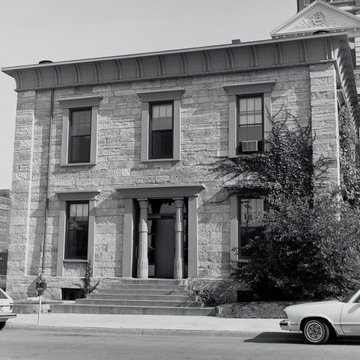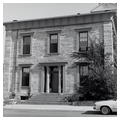The feeling that incarceration was a form of death and burial led in the nineteenth century to the use of Egyptian architectural forms for prisons and jails. Iowa's only example is this small two-story jailhouse designed by John Francis Rague. Rague, who designed the
You are here
Dubuque County Jail
1857–1858, John F. Rague. Southeast corner of Central and 8th streets
If SAH Archipedia has been useful to you, please consider supporting it.
SAH Archipedia tells the story of the United States through its buildings, landscapes, and cities. This freely available resource empowers the public with authoritative knowledge that deepens their understanding and appreciation of the built environment. But the Society of Architectural Historians, which created SAH Archipedia with University of Virginia Press, needs your support to maintain the high-caliber research, writing, photography, cartography, editing, design, and programming that make SAH Archipedia a trusted online resource available to all who value the history of place, heritage tourism, and learning.




